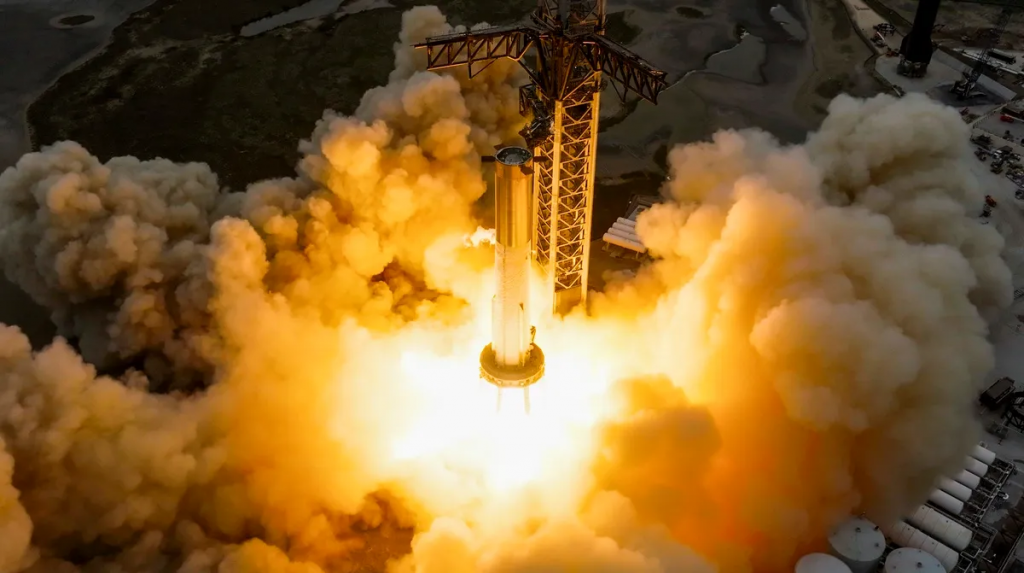SpaceX is preparing for a crucial second test flight of its groundbreaking Starship rocket, and they have left no stone unturned in their quest for success. With Elon Musk at the helm, the company has implemented a sweeping array of upgrades to enhance the Starship’s capabilities.
In a candid Twitter exchange with Bloomberg journalist Ashlee Vance, Musk revealed that the company had undertaken an astonishing “tremendous number” of modifications, exceeding a staggering count of one thousand.
One of the most significant upgrades focuses on revolutionizing the stage separation procedure, a pivotal moment in the rocket’s ascent. Musk explained that they had made a groundbreaking adjustment that could yield a game-changing advantage: adopting the “hot-staging” approach. This technique, employed by Russia’s Soyuz rocket for several decades, involves igniting the upper stage’s engines while it remains attached to the lower stage, preventing any loss of thrust during separation.

Musk, exuding confidence in the benefits of hot-staging, emphasized that this change could deliver a meaningful boost in payload performance, conservatively estimated to be around 10%. Drawing inspiration from proven methodologies, SpaceX has decided to ignite a select few of the Super Heavy booster’s 33 Raptor engines when the Starship’s upper stage engines fire up. This integration requires several modifications to the Super Heavy booster, including an extension at the top adorned with strategically placed vents to escape exhaust from the attached upper stage.
Moreover, shielding will be implemented to safeguard the Super Heavy booster from the intense exhaust generated by the six Raptor engines of the upper stage.

Beyond the stage separation enhancements, Musk tantalizingly hinted at the countless other modifications to the Starship but refrained from divulging specific details. However, he mentioned ongoing improvements to the Starbase launchpad, envisioning a “steel sandwich” water deluge system that would leave the launch pad in far better condition than before.
With the upgrades in place, Musk is cautiously optimistic about the upcoming test flight’s chances of success. He estimated the probability of reaching orbit to be around 60%, acknowledging the myriad of variables that could influence the outcome. While an exact launch date remains uncertain, Musk assured that SpaceX aims to complete the necessary preparations within approximately six weeks.
However, even with SpaceX’s readiness, the second test flight is contingent upon obtaining approval from the Federal Aviation Authority (FAA). Complicating matters, the FAA faces ongoing legal challenges from environmentalists in the aftermath of the first Starship launch, potentially impacting the timeline for approval.
Nevertheless, SpaceX perseveres, undeterred by the hurdles, as they make remarkable progress toward the second test flight. They recently shared an intriguing image on Twitter, showcasing Starship prototype Ship 25 undergoing a crucial “chill and spin” procedure to prepare its Raptor engine pumps for the upcoming orbital launch attempt.
In the quest for groundbreaking achievements in space exploration, SpaceX’s unwavering dedication, innovations, and relentless pursuit of perfection propel humanity toward the stars.
As anticipation builds for the second test flight, the world eagerly awaits the moment when the upgraded Starship will soar through the heavens, carrying the dreams of the future into the vast expanse of space.


